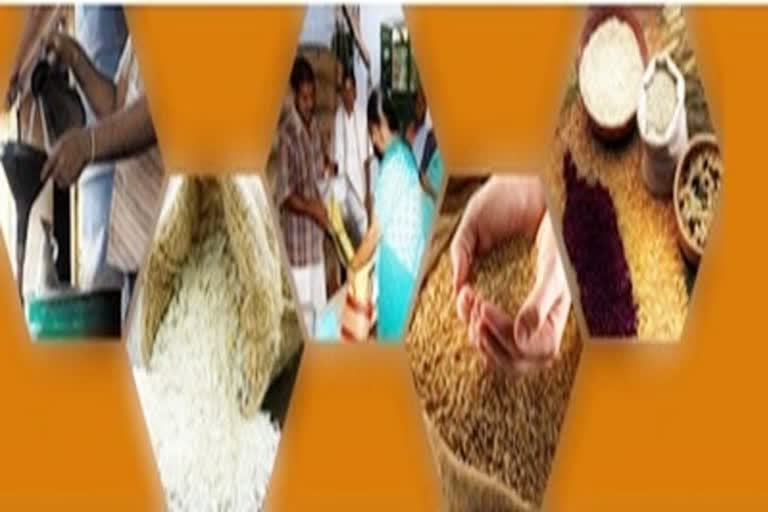Hyderabad (Telangana): According to Food and Agriculture Organization (FAO) and World Food Programme (WFP), looking at the outlook period of March–July 2021, there are 20 countries and situations where there is a likelihood of further deterioration in acute food insecurity, due to multiple drivers of hunger that are interlinked or mutually reinforcing.
These are primarily conflicting dynamics, economic shocks, the socio-economic impacts of COVID-19, weather extremes and the diffusion of plant pests and animal diseases.
A specific group of hotspots – Afghanistan, Burkina Faso, the Central African Republic, the Democratic Republic of the Congo, Ethiopia, Haiti, Honduras, Nigeria, Sudan, South Sudan, the Syrian Arab Republic, Yemen and Zimbabwe – are particularly concerning due to the scale, severity and trends of the existing food crises.
In some areas of these countries, parts of the population are experiencing a critical hunger situation, with extreme depletion of livelihoods, insufficient food consumption and high acute malnutrition. In such fragile contexts, any further shocks could push a significant number of people over the brink and into destitution and even starvation.
READ: Food and medicine shortages hit Cuba, may lead to new economic crisis
Yemen, South Sudan and northern Nigeria represent the highest alert level for this outlook period due to a combination of factors resulting in a risk of famine.
In South Sudan’s Jonglei state and certain areas in Yemen – people are already facing famine-like conditions. These factors include high percentages of the population living in Emergency (IPC Phase 4) food insecurity, heavy constraints to humanitarian access, and a likelihood of worsening food insecurity levels due to conflict, economic blows and climate shocks.
Urgent and at-scale targeted humanitarian action is needed to prevent hunger or death in these most at-risk situations and to safeguard the most vulnerable communities.
Upcoming trends of food insecurity drivers
Conflict risks -Conflict risks Conflict or other forms of armed violence are likely to increase in parts of Afghanistan, the Central African Republic, the Central Sahel, Ethiopia, northern Nigeria, northern Mozambique, Somalia, South Sudan and Sudan.
Economic risks -As a result of the economic impact of the COVID-19 pandemic, in 2021 the economies of numerous countries will continue to be highly vulnerable to economic shocks. Decreased revenues from remittances, commodity exports, tourism and industrial production have been accompanied by ballooning expenditures aimed at supporting population groups whose incomes have been disrupted by movement restrictions and the near-total shutdown of vital economic sectors such as tourism.
READ: Will Maharashtra procure food grains for migrants, poor: High Court asks state govt
Natural hazard risks -Weather and climate extremes driven by the ongoing La Niña event, expected to continue through April/May 2021, are likely to affect several parts of the world.
Transboundary threats -The desert locust situation in East Africa and on the Red Sea Coast remains of concern and should be monitored closely in the coming months. In Southern Africa, more specifically in parts of Angola, Botswana, Namibia, Zambia and Zimbabwe, a serious outbreak of the African migratory locust poses a serious threat to summer cropping.
Countries of highest concern
In Afghanistan, 2.2 million additional people moved into critical levels of acute food insecurity in one year, resulting in 5.5 million expected to be in Emergency (IPC Phase 4) as of March 2021
In Ethiopia, the conflict in Tigray is further aggravating worrisome food security projections that estimate about 2.6 million to be facing Emergency (IPC Phase 4) levels between January and June 2021.
In Sudan, a deteriorating economic crisis – compounded by the socio-economic effects of COVID-19 – has resulted in exceptionally high food prices. Along with a potential uptick in intercommunal clashes, these factors are expected to continue driving high levels of acute food insecurity in the country where 1.3 million people were already estimated to be in Emergency (IPC Phase 4) from October to December 2020.
In the Syrian Arab Republic, the economy has been rapidly deteriorating in 2020 due to multiple shocks including mass population displacement, damage to infrastructure ad services and a shortage of foreign-exchange reserves.



